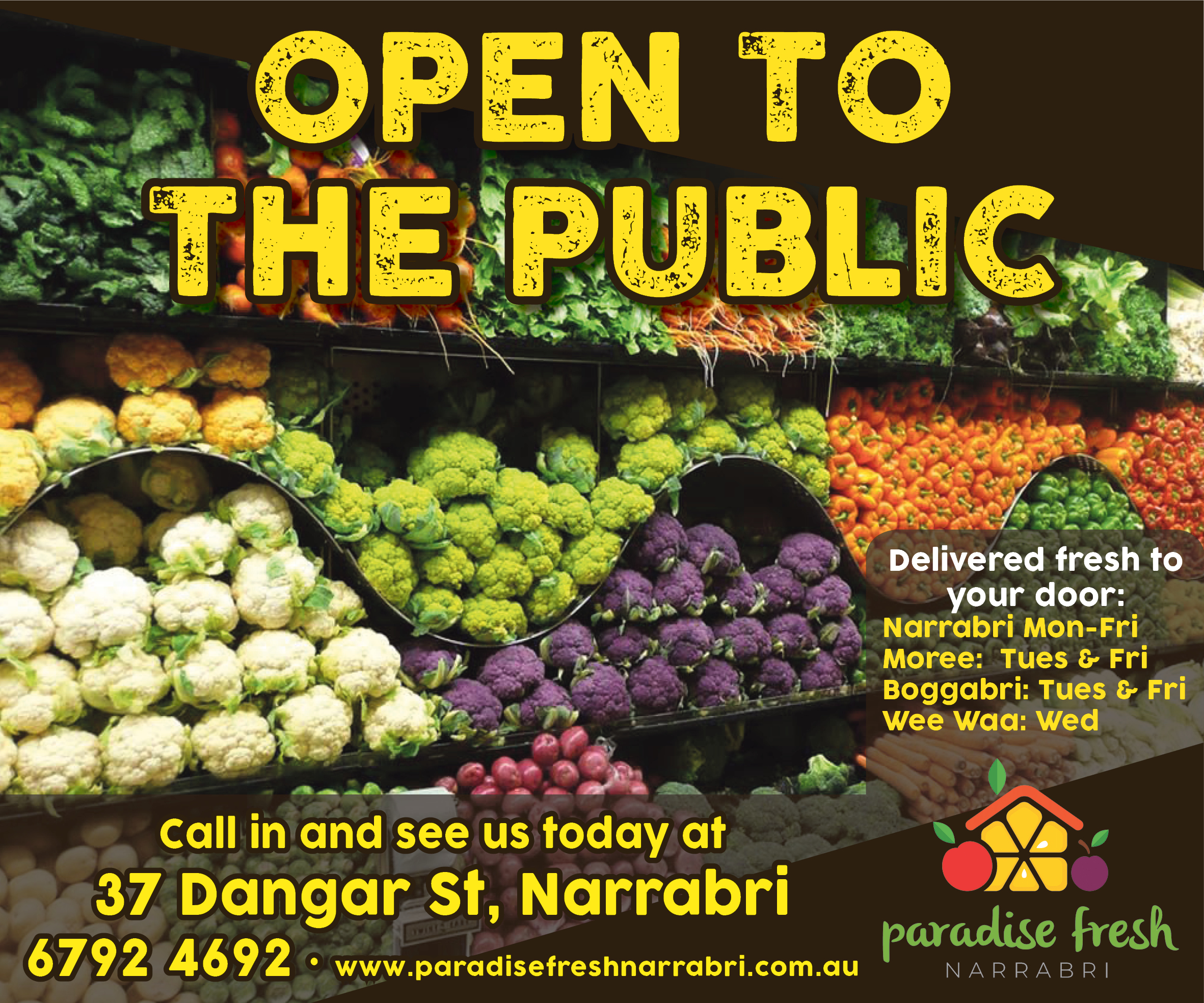Youth crime has once again been the focus of much media attention these past few weeks after the NSW government announced a $26.2 million package to tackle regional youth crime.
While Moree has been the focus with a $13.4 million investment into a targeted pilot program, a number of other communities across my electorate have also been hurting as a result of increased anti-social behaviour from our young people.
Towns like Moree, Dubbo, Bourke, Walgett and Coonamble are among those communities that have been calling out for help to tackle a worrying rise in criminal activities, and so I welcome any practical solutions that will reduce the instances of juvenile crime and make people feel safe in their homes.
However, I worry that this funding will just end up being yet another band-aid solution that fails to address the underlying problem. And that is, what is driving our children and teenagers to be out on the streets and turning to crime in the first place?
I’m regularly talking to community leaders, elders, councillors and service providers and they will all tell you the same thing – that this issue stems from the home.
Often these children are out on the streets at all hours of the night because for many of them, the streets are safer than their own home. It’s unimaginable to think about some of the atrocities our children are being subjected to or witnessing but it’s the grim reality for too many.
Sadly, it’s been happening for decades.
And until we address the fact that all too often small children are left in dangerous situations when they should be removed, nothing will change.
It’s time we address the elephant in the room, which is that authorities are hesitant to intervene in these cases because of the sensitivities and complexities surrounding the Stolen Generations and other forced historical adoption practices.
While I agree that removing a child from their family should be a very last resort, there are times when this would be in the best interests of the child.
I strongly believe that the rights of the child should always come before those of the parent. As adults, we have a responsibility to care for our children and ensure their basic needs are met. If a child’s rights or safety is being violated, then it’s up to us as adults to protect that child and remove them from harm.
I know there are many elders in our communities – aunties and uncles, grandparents and great grandparents – who are caring for children whose parents can’t look after them and I’d like to acknowledge all those selfless people for doing their best to maintain a normal life for those kids.
I’d also like to acknowledge all the positive work that is being done in our communities by fantastic organisations like the Clontarf Foundation, LeaderLife in Dubbo, FlatTrack in Moree, Down the Track in Lake Cargelligo, Boys to the Bush, and many others. Real changes are being made by those grassroots programs that are run by passionate locals.
Since I’ve been in this job, there has been a significant increase in the number of Indigenous teenagers who are completing year 12, undertaking trades, apprentices and tertiary education, and stepping up to be community leaders. It’s programs like Clontarf that are making that happen which is wonderful to see.
I believe education is the key to empowering our children to aspire to a better life for themselves. That is how we can begin to break the cycle of intergenerational trauma and welfare dependency. And once we break that cycle, things like crime will almost certainly reduce.
It’s a deeply complex and complicated issue that will not be fixed overnight, or by a bucketload of money. It’s not black and white and it’s not just an Indigenous issue.
But the earlier we can intervene and ensure our children feel safe and loved and have access to a good education, the better the outcomes will be.
That’s why I believe we need to focus on more early intervention initiatives for children in preschool and early primary school. Often, by the time these children are in high school, it’s too late.
I do commend the NSW government on its investment in early intervention and prevention programs. The funding for a new bail accommodation and support service could be a real game changer in Moree.
However, I question whether throwing more money at some of the existing youth organisations will make any difference. There’s numerous organisations across my electorate that have already been tasked with the job of supporting young people for many years, and they just don’t seem to be working.
Hopefully the new action plan and six month service review that’s part of this funding will improve accountability and delivery of these services. But on top of that, there needs to be an audit into where all the state and federal funding has gone over the years and what has been achieved with that money. Until these organisations are held to account, nothing will change.
Finally, I’d just like to say that while youth crime is a serious issue in communities right across the Parkes electorate, it does not define them. One of the most disappointing things about this whole issue is that it has once again brought attention to our towns for all the wrong reasons.
Our towns are being tainted by city media as “crime capitals” where locals are “living in fear” of “out-of-control children”. There are certainly instances of this, but that is not the overall sense I get when I travel around my electorate. I see communities thriving with new businesses opening up, industries expanding and endless opportunities on the horizon.
Communities in the Parkes electorate should be making news about all the good things happening like innovation in agriculture, local achievements and sporting success. Instead, that’s all being overshadowed by the criminal actions of a minority.
We must work together to address the complex and often distressing reasons young people are turning to crime, but at the same time we should not forget the people who make
our communities so diverse, vibrant and thriving. It is these people who I believe hold the key to creating a community that can offer the strong foundations our youth need to
succeed.
To order photos from this page click here




Youth crime not a reflection of our communities
Apr 3, 2024
Youth crime has once again been the focus of much media attention these past few weeks after the NSW government announced a $26.2 million package to tackle regional youth crime.
While Moree has been the focus with a $13.4 million investment into a targeted pilot program, a number of other communities across my electorate have also been hurting as a result of increased anti-social behaviour from our young people.
Towns like Moree, Dubbo, Bourke, Walgett and Coonamble are among those communities that have been calling out for help to tackle a worrying rise in criminal activities, and so I welcome any practical solutions that will reduce the instances of juvenile crime and make people feel safe in their homes.
However, I worry that this funding will just end up being yet another band-aid solution that fails to address the underlying problem. And that is, what is driving our children and teenagers to be out on the streets and turning to crime in the first place?
I’m regularly talking to community leaders, elders, councillors and service providers and they will all tell you the same thing – that this issue stems from the home.
Often these children are out on the streets at all hours of the night because for many of them, the streets are safer than their own home. It’s unimaginable to think about some of the atrocities our children are being subjected to or witnessing but it’s the grim reality for too many.
Sadly, it’s been happening for decades.
And until we address the fact that all too often small children are left in dangerous situations when they should be removed, nothing will change.
It’s time we address the elephant in the room, which is that authorities are hesitant to intervene in these cases because of the sensitivities and complexities surrounding the Stolen Generations and other forced historical adoption practices.
While I agree that removing a child from their family should be a very last resort, there are times when this would be in the best interests of the child.
I strongly believe that the rights of the child should always come before those of the parent. As adults, we have a responsibility to care for our children and ensure their basic needs are met. If a child’s rights or safety is being violated, then it’s up to us as adults to protect that child and remove them from harm.
I know there are many elders in our communities – aunties and uncles, grandparents and great grandparents – who are caring for children whose parents can’t look after them and I’d like to acknowledge all those selfless people for doing their best to maintain a normal life for those kids.
I’d also like to acknowledge all the positive work that is being done in our communities by fantastic organisations like the Clontarf Foundation, LeaderLife in Dubbo, FlatTrack in Moree, Down the Track in Lake Cargelligo, Boys to the Bush, and many others. Real changes are being made by those grassroots programs that are run by passionate locals.
Since I’ve been in this job, there has been a significant increase in the number of Indigenous teenagers who are completing year 12, undertaking trades, apprentices and tertiary education, and stepping up to be community leaders. It’s programs like Clontarf that are making that happen which is wonderful to see.
I believe education is the key to empowering our children to aspire to a better life for themselves. That is how we can begin to break the cycle of intergenerational trauma and welfare dependency. And once we break that cycle, things like crime will almost certainly reduce.
It’s a deeply complex and complicated issue that will not be fixed overnight, or by a bucketload of money. It’s not black and white and it’s not just an Indigenous issue.
But the earlier we can intervene and ensure our children feel safe and loved and have access to a good education, the better the outcomes will be.
That’s why I believe we need to focus on more early intervention initiatives for children in preschool and early primary school. Often, by the time these children are in high school, it’s too late.
I do commend the NSW government on its investment in early intervention and prevention programs. The funding for a new bail accommodation and support service could be a real game changer in Moree.
However, I question whether throwing more money at some of the existing youth organisations will make any difference. There’s numerous organisations across my electorate that have already been tasked with the job of supporting young people for many years, and they just don’t seem to be working.
Hopefully the new action plan and six month service review that’s part of this funding will improve accountability and delivery of these services. But on top of that, there needs to be an audit into where all the state and federal funding has gone over the years and what has been achieved with that money. Until these organisations are held to account, nothing will change.
Finally, I’d just like to say that while youth crime is a serious issue in communities right across the Parkes electorate, it does not define them. One of the most disappointing things about this whole issue is that it has once again brought attention to our towns for all the wrong reasons.
Our towns are being tainted by city media as “crime capitals” where locals are “living in fear” of “out-of-control children”. There are certainly instances of this, but that is not the overall sense I get when I travel around my electorate. I see communities thriving with new businesses opening up, industries expanding and endless opportunities on the horizon.
Communities in the Parkes electorate should be making news about all the good things happening like innovation in agriculture, local achievements and sporting success. Instead, that’s all being overshadowed by the criminal actions of a minority.
We must work together to address the complex and often distressing reasons young people are turning to crime, but at the same time we should not forget the people who make
our communities so diverse, vibrant and thriving. It is these people who I believe hold the key to creating a community that can offer the strong foundations our youth need to
succeed.